I’ve had some questions about vertical gardening, and as I’ve shared these with people I know I’ve found an abundance of interest in vertical gardening, but not a lot of knowledge. So it seemed like one more great idea to dig into and share what I find with those I’ve spoken with and others. As with any other gardening interest, there are literally hundreds of videos on YouTube and similar video media outlets as well as an abundance of useful articles. I’m just hitting the surface of what could turn into an amazing and satisfying experiment for you; and inspirational pictures as well as the references are on the bottom for additional reading.
Jon
Definition:
Green Wall (vertical Garden)- A green wall is a wall partially or completely covered with vegetation that includes a growing medium, such as soil. Most green walls also feature an integrated water delivery system. Green walls are also known as living walls, biowalls, ecowalls, or vertical gardens. Such walls may be indoors or outside, freestanding or attached to an existing wall, and come in a great variety of sizes.
Essentially, there are two types of vertical gardens — those that grow in soil and those that grow in water. Water-based growing mediums are either aquaponic or hydroponic. Hydroponics is a method of growing vegetables and other plants in water without soil and nourished with a mineral nutrient. Aquaponics is a growing system combining the raising of aquatic animals such as fish with hydroponic gardening, where plants are cultivated in a water medium all in the same tank. The symbiotic relationship between the plants and animals produces a vital growing medium and a sustainable food production system. Both systems provide organic or non-organic growing environments for vegetables.
Advantages:
When you grow you vining vegetables upward you use far less ground space. The dramatically increases your yield per square foot because you can fit more plants in a given area.
Monitoring and controlling pests has proven to be far easier as they are quite literally right in front of your face. Birds often become an aid here as they do a better job of picking of plant eating insects.
Harvesting becomes easier physically as there is little or no stooping and hunching over. This accessibility is especially important for those gardeners with disabilities as they can tend and pick from their garden easily while on a garden seat.
Fewer fruits go to waste from being hidden in lust growth and growing overripe.
Pole beans typically produce twice as much as the bush variety, and the right trellis can double your cucumber yields.
Tomatoes, that need some kind of support to keep them above the damp ground, have less issues with diseases.
“The most successful trellises increase the leaf-to-fruit ration of the plant by allowing more leaves access to sun.”
Vertical gardening discourages soil borne diseases.
13 Additional reasons from naturalnews.com:
1. Old souls love to putter in the garden, but the oldest of souls usually complain about their backs and knees hurting. Vertical gardening enables you to grow veggies without ever bending or getting on your knees again. Grow vertically in plant pockets, hanging planters, stacking containers, recycled pallets, in stacked flower boxes, table garden systems, plant trees, in greenhouses on tables and up-cycled ladders. If you can imagine it, you can grow it.
2. Save space with a vertical garden, especially if you have no land or a very small yard. Grow up the side of your fence, on a wall, the deck, your balcony, in a green house or even inside in the garage.
3. Some vertical garden systems are portable and can be moved from outside to indoors on wheeled apparatus.
4. Grow inside during colder month, using a grow light.
5. Community gardens are easy to set up, even in small, indoor spaces.
6. There’s much less work and time involved when preparing vertical gardens — no tilling, no digging.
7. Use less water because in many vertical gardens, water is recycled through the planting system.
8. Your dog won’t dig up your garden, and neither will rabbits or deer.
9. It’s an easier way to protect your plants from soil-borne pests.
10. Companion gardening is easy and even more advantageous when you can move planters around to take advantage of beneficial conditions.
11. Using no soil means no weeds or fewer weeds in less soil.
12. Increase vegetable yield. Relocate plants to better take advantage of light and air circulation.
13. My favorite reason for being a fan of vertical gardening is to avoid the prying eyes of municipal authorities — those people forcing others to dig up gardens and destroy their food supply. Vertical gardening allows you to grow food in less obvious places, even under grow lights, out of site of the food police.
Thoughts to Keep in Mind:
Trellises must be situated on the north side of you garden to prevent shading other plants.
Trellises must be securely anchored to protect them from the wind; and to hand the weight the trellises must have posts sunken 24 inches deep to hand the weight of plants. Many gardeners use T-stakes for anchoring and 4-by-4 posts. Trellises typically stand 8 feet wide and 4 to 5 feet high, and ore often made of woven wire fencing hung between two posts.
“The stakes should be as high as the variety is expected to grow, which can range from 2 to 6 feet.”
The way you construct your trellises will vary on the type of plants you will be growing as they have different tendencies in the way they climb. These can include, but are not limited to curling tendrils, twining stems, or in the case of tomatoes, long, ropy branches that form the roots in place and touch the ground.
“Curling tendrils produced by peas and cucumber-family crops will twist around whatever is available, so you have plenty of versatility when supporting these crops. Tendrils cling to horizontal and vertical parts of a trellis, so netting woven from biodegradable string attached to posts often works well. Twining stems spiral around their support, growing steadily upward until they turn back on themselves — a growth habit seen in hops, pole beans, Malabar spinach, and yard long beans.”
“Twining stems have little use for horizontal lines, so they do best with trellises composed mostly of poles or an upright fence.”
“Tomatoes like to throw themselves over their support. They must be trained and tied to an upright trellis, which isn’t as easy as growing them in wire cages. The larger, more robust the tomato plant, the more you need a sturdy tomato cage that provides support on all sides.”
Allowing 4 inches of clearance between the bottom and the soil make them much easier to weed and cultivate.
Crop-Specific Supports:
“Peas of any type (snow, snap, or shell) prosper if grown on a vertical trellis made by weaving string into a grid attached to two posts, starting with the horizontal lines. Small, bare branches stuck into the ground between plants will help lead pea seedlings to their support. Long-vined pea varieties often require extra support if they become top-heavy with pods. One easy fix is to add four stakes, one at each outer corner of the planting. These stakes can anchor a corral made of two or three horizontal runs of string, up to 5 feet from the ground. Pea vines that lose their moorings will cascade over the strings, where they are wonderfully easy to pick from. Last year I tried an old idea: using grains as pea supports. Overwintered cereal rye plants thinned to about 14 inches apart worked great, though you will need a tall pea to make use of rye’s 5-foot height.
To make the most of any pea trellis, “stack” the base of the trellis with both a short and a tall variety, such as ‘Sugar Ann’ snap peas with ‘Sugar Snap.’ The shorter variety will grow quickly, providing a little support for its slower-growing brethren, and it will start bearing just as the taller one begins to bloom.
Pole beans, runner beans, and asparagus beans become extremely heavy at maturity. Upright trellises must be sturdy or they can be pushed askew by summer thunderstorms. There is perhaps no better use for an existing woven-wire fence than to use it to support pole beans. So-called half-runner varieties are a perfect fit for a 4- to 5-foot-tall fence. If needed for longer-vined varieties, tall stakes can easily be added to increase the fence’s height. You can attach these stakes with string to create a vision in vines. When I did this with a mixture of pole beans that produced yellow, purple and green pods, the result was delightful.
Beans take off when given a tripod or tipi-style trellis, which naturally resists toppling because it pulls downward on itself as the weight it bears increases. You should carefully consider height when planning a bean trellis. Nothing is worse than watching beans go unpicked because you can’t reach them without standing on something. You can control height to some extent by avoiding long-vined varieties, but you will need to limit the height of the trellis, too.
Personally, I have two favorite bean trellises: a humble, 3-foot-diameter woven wire tomato cage anchored with two metal fence posts for an early planting, and the stalks of sweet corn for a late-season trellis. Pole beans eagerly scramble up withering corn, and the corn doesn’t mind as long as you wait until it’s at least a foot tall to plant the beans.
Cucumber varieties vary in how well they take to a trellis. Large-fruited, burpless hybrids can be easily trained up an upright grid-type trellis made of string or wire. Just push the growing vines through the mesh about once a week. Smaller pickling cucumbers tend to branch more, making them more unruly to train. Woven-wire tomato cages contain their exuberance reasonably well, and make the ripe fruits easier to find.
Melons offer a unique opportunity to use diagonal, or A-framed trellises. Melon vines prefer to stay close to the ground, but raising them up protects them from diseases and insects that travel on the ground. Look for varieties that you should harvest at “forced slip,” which means the melons must be cut from the vine when ripe. Small-fruited honeydews are excellent candidates for trellis culture.
If your garden space is tight and you don’t think you have room for melons, think about connecting adjoining beds with an arch or A-frame trellis for this delicious summer fruit. This trick temporarily turns a pathway into usable, above-ground gardening space.
Tomatoes growing in woven or welded-wire cages need monitoring until you get to know a variety’s unique growing habits, because the same trellis that satisfies a compact ‘Juliet’ will be a disaster with a gangly ‘Brandywine.’ The top choice for homemade cages is concrete reinforcing wire, which will last for years, and the 6-inch-by-6-inch openings make picking easy. Make the cages in slightly descending diameters so they can nest together for storage.
Among ready-made cages, three-ring welded cages are adequate only for early determinate varieties. The four- and five-ring models can handle varieties of modest to average size and vigor, but most tomatoes will spew out the top and sides, and then start leaning toward the sun. Similarly, a lanky variety such as ‘Sun Gold’ can be trained and tied to an upright trellis or fence, but varieties that grow into dense, 6-foot bushes, such as ‘Black Krim’ or ‘Better Boy,’ need support on all sides, which is best provided by a cage. Even the best tomato cages become top-heavy when the plants are in full fruit, so they should be well-anchored to deeply set stakes.
Tall, non-vining crops such as peppers and cutting zinnias benefit from some support. This is where the small “tomato” cages can be helpful. Place one cage in each corner of a bed, then thread twine around and through the cages, making a support matrix for the leggy plants.”
Inspirational Pictures:
http://www.motherearthnews.com/organic-gardening/vertical-gardening-zmaz10djzraw.aspx?PageId=4#ArticleContent
http://www.organicgardening.com/learn-and-grow/vertical-gardening
http://www.countryliving.com/outdoor/how-to-plant-a-vertical-garden#slide-4
http://en.wikipedia.org/wiki/Vertical_gardens
http://www.naturalnews.com/037641_vertical_gardening_vegetables_food_production.html#

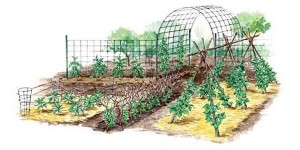
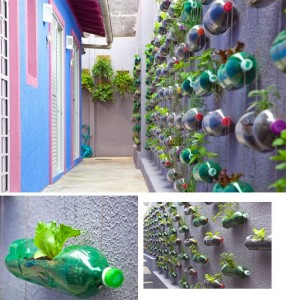
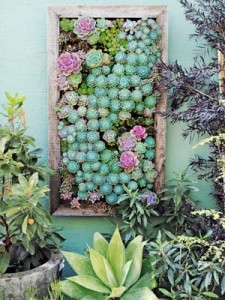

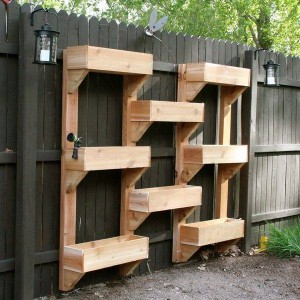
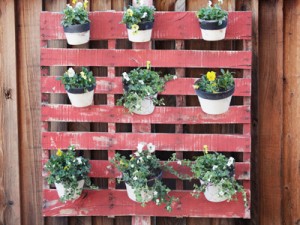
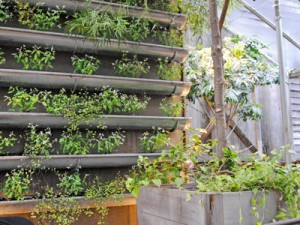
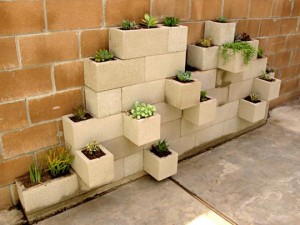
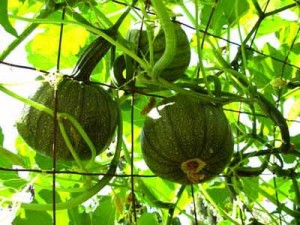

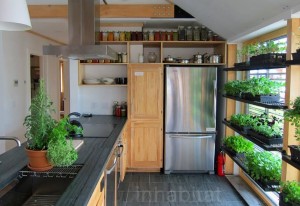

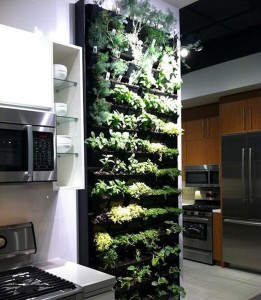

We’re going vertical with our cunlraiy gardens up and down trellises, windows, walls, and every other vertical space you can imagine. Vertical gardening (not to be confused with vertical farming, which involves turning